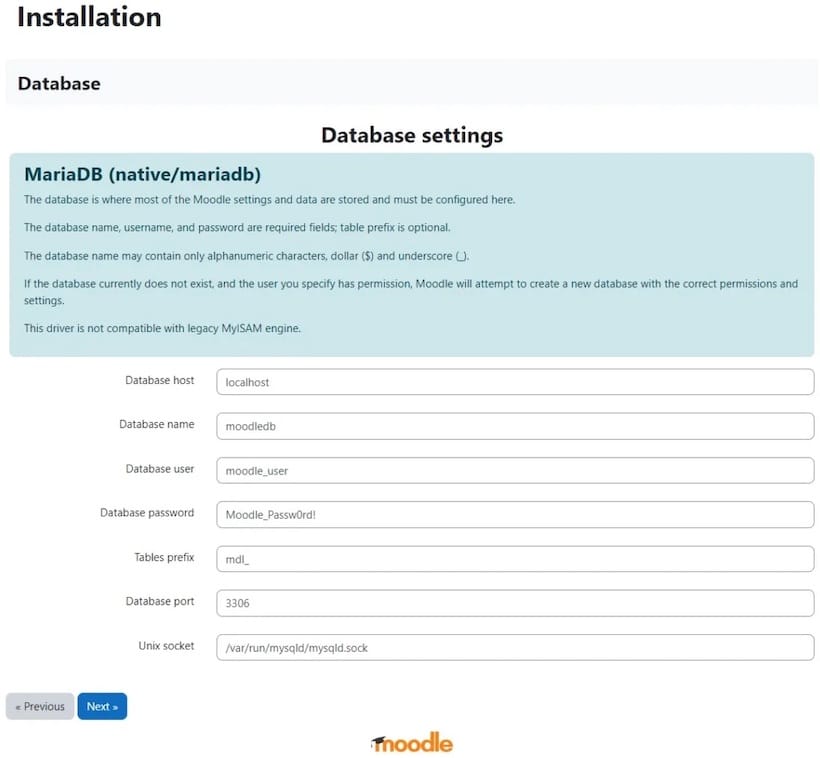How To Install Moodle on Debian 12

In this tutorial, we will show you how to install Moodle on Debian 12. Moodle stands out as a beacon of open-source learning management systems (LMS). Renowned for its flexibility and robustness, Moodle caters to educators’ and learners‘ diverse needs, offering a platform for creating personalized learning environments.
This article assumes you have at least basic knowledge of Linux, know how to use the shell, and most importantly, you host your site on your own VPS. The installation is quite simple and assumes you are running in the root account, if not you may need to add ‘sudo‘ to the commands to get root privileges. I will show you the step-by-step installation of the Moodle learning management system on Debian 12 (Bookworm).
Prerequisites
Before proceeding with the installation of Moodle on Debian 12, ensure you meet the following requirements:
- A server running one of the following operating systems: Debian 12 (Bookworm).
- It’s recommended that you use a fresh OS install to prevent any potential issues.
- SSH access to the server (or just open Terminal if you’re on a desktop).
- An active internet connection. You’ll need an internet connection to download the necessary packages and dependencies for Moodle.
- A user account with sudo privileges to execute administrative commands.
Install Moodle on Debian 12 Bookworm
Step 1. Start by updating your system packages to ensure everything is up-to-date. This step is crucial for security and performance:
sudo apt update sudo apt upgrade
Step 2. Installing the LAMP stack.
A Debian 12 LAMP server is required. If you do not have LAMP installed, Please read our previous tutorial to install LAMP Server on Debian Linux.
Step 3. Installing Moodle on Debian 12.
Download Moodle from the official repository and set the correct permissions:
cd /var/www/html sudo git clone https://github.com/moodle/moodle.git
Moodle requires a directory for course files:
sudo mkdir /var/www/moodledata
Correct permissions are critical for security and functionality:
sudo chown -R www-data:www-data /var/www/html/moodle sudo chown -R www-data:www-data /var/www/moodledata sudo chmod -R 755 /var/www/html/moodle sudo chmod -R 777 /var/www/moodledata
Step 4. Setting Up MySQL for Moodle.
First, log in to MySQL as the root user:
sudo mysql -u root -p
Create a dedicated database and user for Moodle:
CREATE DATABASE moodle CHARACTER SET utf8mb4 COLLATE utf8mb4_unicode_ci; CREATE USER 'moodleuser'@'localhost' IDENTIFIED BY 'your-strong-password'; GRANT ALL PRIVILEGES ON moodle.* TO 'moodleuser'@'localhost'; FLUSH PRIVILEGES;
Step 5. Configuring Apache for Moodle.
Create a virtual host file for your Moodle site. Replace your_domain.com with your actual domain name:
sudo nano /etc/apache2/sites-available/moodle.conf
Insert the configuration, adjusting for your domain:
<VirtualHost *:80>
ServerAdmin admin@your_domain.com
DocumentRoot /var/www/html/moodle
ServerName your_domain.com
<Directory /var/www/html/moodle>
AllowOverride All
</Directory>
ErrorLog ${APACHE_LOG_DIR}/moodle_error.log
CustomLog ${APACHE_LOG_DIR}/moodle_access.log combined
</VirtualHost>
Enable the site and restart Apache:
sudo a2ensite moodle.conf sudo systemctl restart apache2
Step 6. Configure Firewall.
To configure the firewall (UFW) for Moodle on Debian 12, follow these steps:
sudo apt install ufw
Before enabling UFW, ensure that SSH connections are allowed to prevent being locked out of your server:
sudo ufw allow ssh
Then, enable UFW:
sudo ufw enable
For a Moodle installation, you need to allow web traffic on both HTTP (port 80) and HTTPS (port 443). Execute the following commands to allow traffic on these ports:
sudo ufw allow 80/tcp sudo ufw allow 443/tcp
Whenever you make changes to your UFW rules, it’s a good practice to reload the firewall to apply the changes:
sudo ufw reload
Step 7. Setup HTTPS Let’s Encrypt.
To set up HTTPS with Let’s Encrypt for Moodle on Debian 12, you will need to install and configure Certbot, a free tool that automates the installation of Let’s Encrypt SSL certificates:
sudo apt update sudo apt install certbot python3-certbot-apache
Run Certbot to obtain an SSL certificate and configure your Apache server to use it:
sudo certbot --apache
During the process, you will be prompted to enter an email address for notifications, agree to the terms of service, and choose whether or not to redirect HTTP traffic to HTTPS.
Step 8. Completing the Moodle Installation.
Navigate to https://your_domain.com to complete the installation through Moodle’s web interface. Follow the on-screen instructions, using the database details created earlier.


Step 7. Configure Cron for Moodle.
Set up a cron job to automate Moodle tasks:
sudo crontab -u www-data -e
Add the following line to execute Moodle cron every minute:
* * * * * /usr/bin/php /var/www/html/moodle/admin/cli/cron.php >/dev/null
Congratulations! You have successfully installed Moodle. Thanks for using this tutorial to install the latest version of the Moodle learning management system on Debian 12 Bookworm. For additional help or useful information, we recommend you check the official Moodle website.